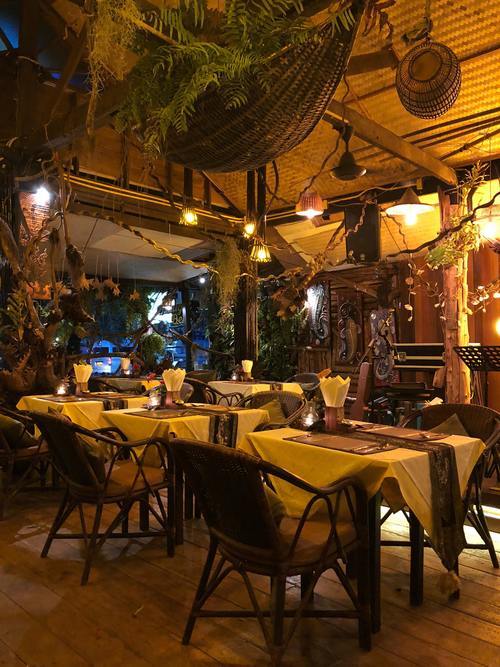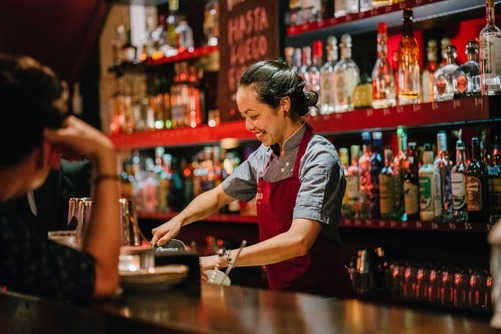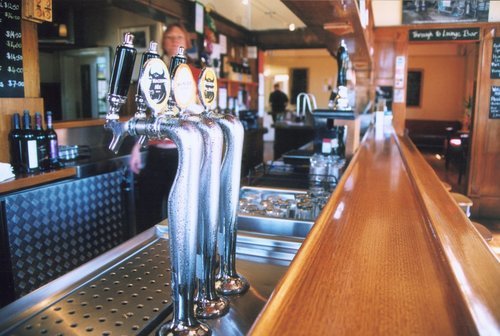Walking into a restaurant engages all the senses. We notice the lighting, the decor, the aroma from the kitchen, and almost invariably, the music. Music in a hospitality setting is far more than just background filler; it’s a powerful psychological tool. The sounds filling your space – your ‘sonic menu’ – can influence everything from your guests’ moods and perceptions to how long they stay and even what they choose to order. Getting this sonic menu right is a crucial, yet often underestimated, ingredient in the recipe for hospitality success in 2025.
Shaping the Dining Experience Through Sound
The music playing in your venue acts as an invisible conductor, subtly guiding customer behaviour and perception. Everything from the speed of the music to how loud it is plays a part in the overall atmosphere and guest response.
The Power of Tempo
Consider the tempo first. Faster tracks often feature in bustling lunch spots, while relaxed dinner venues might opt for slower melodies. This isn’t accidental. Research, like a field experiment looking into background music’s effects, demonstrates that slower tempos encourage guests to linger. They relax and settle in, which is ideal if you want to promote dessert sales or another round of drinks during quieter periods. Conversely, faster tempos can subtly encourage quicker table turnover, potentially increasing covers during peak times. Interestingly, while tempo significantly impacts dining duration, that particular study didn’t find a direct link to the total bill amount, although faster music was associated with slightly higher tips, possibly due to increased energy levels or arousal.
Volume Finding the Right Level
Volume, however, is often the most noticeable – and potentially divisive – element. It’s a delicate balance. Loud music can inject energy and create a ‘buzz’, potentially increasing arousal levels. Some studies suggest this heightened state might nudge diners towards less healthy food choices; a Stockholm café experiment found louder music (around 70 dB) correlated with a 20% increase in orders for unhealthy items compared to softer music (55 dB). Indeed, psychological theories suggest higher arousal or stress can weaken self-control, making indulgent options more appealing. However, excessive volume risks alienating customers. The most common complaint about restaurant music, as found in surveys and reported by Fast Company, is excessive volume hindering conversation – a vital part of the dining experience for many. While some venues might intentionally use loud music to speed up eating and drinking for faster turnover, this strategy can backfire by driving away patrons who prefer a more relaxed atmosphere. Conversely, softer music typically fosters calm, potentially leading to more considered, healthier choices and, crucially, better social interaction.
Music’s Emotional Connection
The impact of music on guest emotions is significant and shouldn’t be underestimated. Even during unique situations like the quieter dining rooms experienced during the COVID-19 pandemic, background music was found to heavily influence diners’ feelings. In fact, one empirical study showed that different types of background music (like classical vs. jazz arrangements) led to noticeable differences in both emotions and subsequent behaviours. This reinforces that your playlist isn’t just sound; it’s an emotional primer setting the stage for the entire experience, directly impacting how guests feel and interact within your space.
Sounds Surprising Influence on Taste and Spending
Beyond setting the mood and pace, the music you choose can interact with your guests’ experience in even more profound ways, influencing how they perceive flavour and how much they ultimately spend.
How Sound Alters Taste
It might sound far-fetched, but research confirms that what we hear can alter flavour perception. Studies from Oxford University’s Crossmodal Research Laboratory, which investigates how our senses like hearing and taste interact, indicate sound frequencies influence taste neurologically. As Flypaper details, high-frequency sounds (like flutes or piano) can enhance sweetness perception, while low-frequency sounds (cello or bass) might highlight bitterness. Imagine subtly boosting your signature dessert’s sweetness with the right high-pitched track or complementing a rich coffee or bitter greens with deeper, resonant tones – it’s about creating multi-sensory harmony where sound complements flavour.
Genre’s Impact on Perception and Spending
Genre also plays a crucial role, tapping into associations and expectations. Classical music often evokes sophistication and quality. In fact, one study found classical music led diners to feel more relaxed, rate the food and ambiance higher, express greater loyalty, and remarkably, spend an average of 20% more compared to when pop or regular jazz music was played. Pop music, despite its broad appeal, scored lower in this context, possibly feeling out of place in a setting aiming for refinement. Jazz might foster a relaxed, social vibe suitable for lounges or certain bistros. Furthermore, aligning music culturally with the cuisine can enhance perceived authenticity and flavour – think traditional Sitar music for an Indian restaurant or lively Flamenco for Spanish tapas. This taps into our brain’s confirmation bias, reinforcing that the food tastes ‘right’. The overall music’s impact on food consumption is clear; it shapes not just mood but the core tasting experience and willingness to spend.
Crafting Your Restaurants Signature Sound Strategy
Understanding these psychological effects allows you to move beyond simply hitting ‘play’ on a generic playlist. It’s about strategically curating a soundscape – your unique ‘sonic menu’ – that supports your brand identity and business objectives.
Strategic Soundscaping for Your Brand
Consider your specific context. A fast-casual spot needing efficient lunch turnover might benefit from faster-paced, energising music – perhaps upbeat pop or indie rock around 110-130 BPM. Conversely, a fine-dining establishment aiming for an atmosphere of luxury and encouraging guests to savour the experience might use slower tempos (sub-80 BPM) and genres like classical, smooth jazz, or sophisticated ambient electronic music. As research highlights, volume and style choices can indeed impact the types of food ordered. Also, think about your target demographic – what resonates with them? Millennials, for instance, consistently rank music and atmosphere highly when choosing where to dine or drink.
The Unique Appeal of Live Music
Live music offers distinct advantages in creating atmosphere and driving business. A study by BMI and NRG, highlighted by Bar & Restaurant magazine, confirmed its significant impact. Approximately 80% of patrons are inclined to stay longer if they enjoy the music, and nearly 60% are likely to spend more on food and drinks – this jumps to 70% for millennials. An overwhelming majority (86%) feel the experience is more memorable with good music. For millennials, music is often the second most important factor in choosing a venue. They demonstrate patience, with 81% willing to wait up to 20 minutes for a table if live music is playing. Many venues report tangible benefits, observing average check increases of 5-10% and overall revenue jumps of almost 25% on live music nights. Live performance creates a unique energy, fosters connection, and can even help manage behaviour – recall the famous example of a McDonald’s in London using classical music to successfully reduce antisocial behaviour.
Fine-Tuning Your Soundscape
Crafting your signature soundscape requires ongoing intentionality. Consider the guest journey – should the music evolve throughout the day, perhaps becoming more energetic later in the evening? Does it match the desired energy levels for different services like brunch versus dinner? Pay attention to acoustics; hard surfaces amplify sound, making volume control even more critical, while soft furnishings can absorb sound, requiring different considerations. Don’t be afraid to experiment and observe. Try varying playlists or genres between similar services and note any differences in table turn times, average guest spend, or even staff mood. Observe guest body language – do they seem relaxed and engaged in conversation, or are they leaning in excessively or appearing agitated? Gather specific feedback from your team on the front line. Ask servers, ‘Did conversations seem easier or more strained during the dinner set compared to lunch?’ or ‘Have any guests commented, positively or negatively, on the music this week?’. Finding that sweet spot between creating atmosphere and allowing comfortable conversation is absolutely crucial.
The Enduring Power of Your Sonic Menu
Ultimately, your music selection is a powerful, non-verbal communication tool, constantly telling a story about your brand and shaping the guest experience in real-time. As we’ve explored, it profoundly influences mood, perception of time, taste experiences, how long people stay, and their spending habits. By understanding the psychology behind sound, you can move beyond generic background noise and curate a ‘sonic menu’ that truly resonates with your guests, enhances their enjoyment, builds loyalty, and positively contributes to your bottom line. Treat your soundscape with the same care and attention you give your food menu, your décor, or your service standards – it’s a vital, dynamic ingredient in the complex, wonderful recipe of hospitality.






 eak things or allow you to customise the food and drinks to your liking.
eak things or allow you to customise the food and drinks to your liking.


 about
about 
 customers shy away from visiting the establishment.
customers shy away from visiting the establishment.